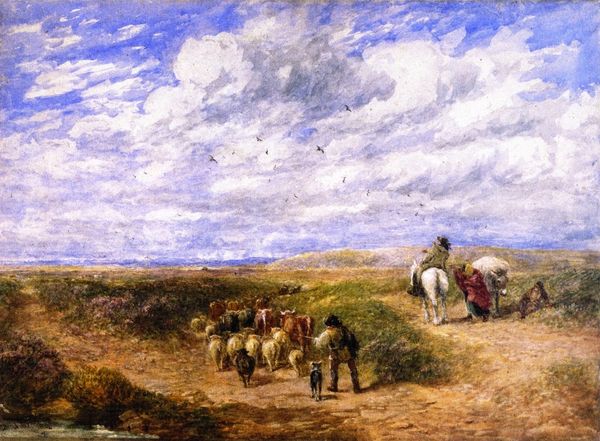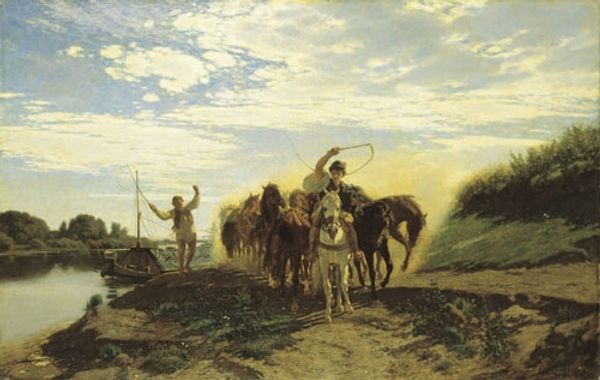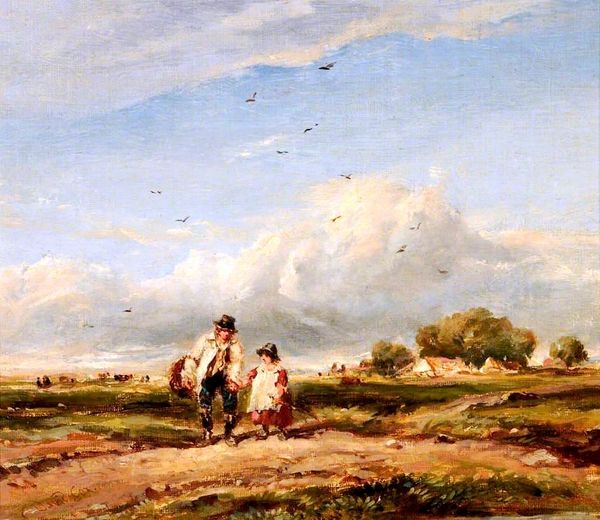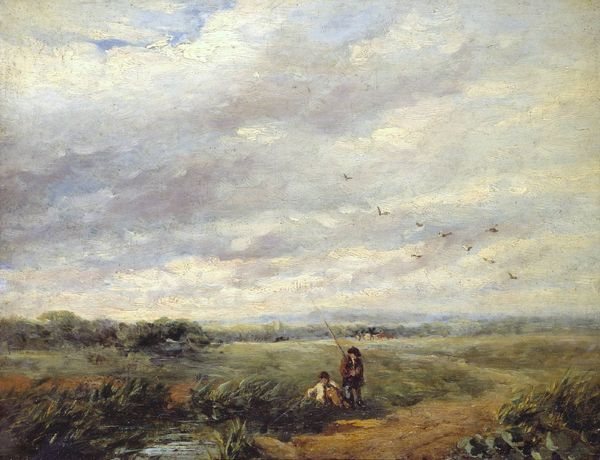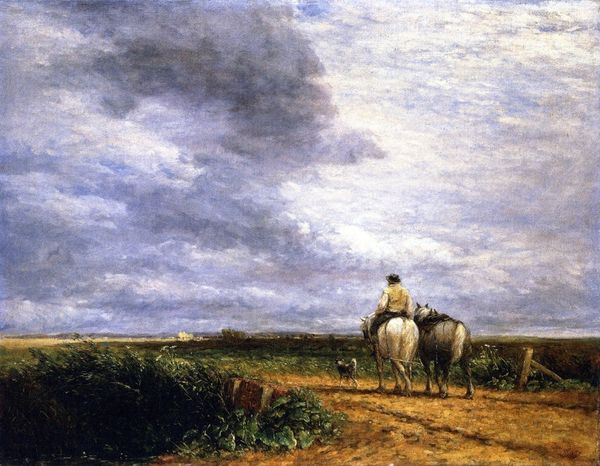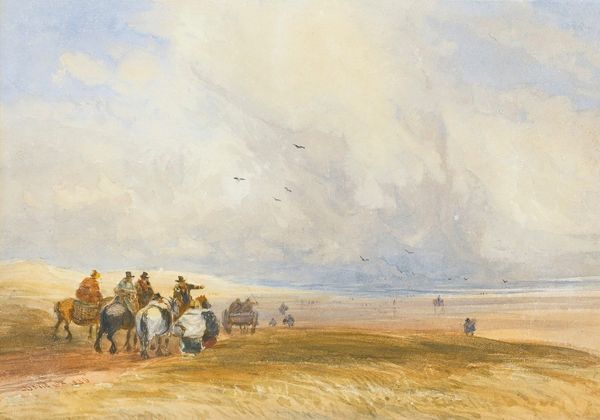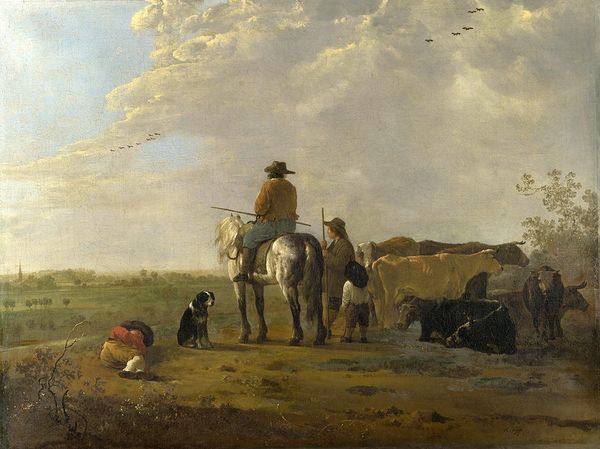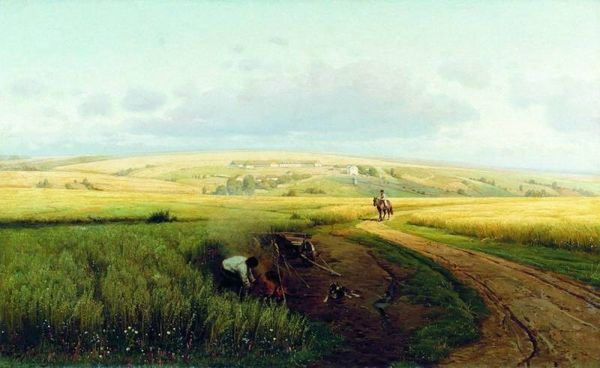
painting, oil-paint
#
painting
#
oil-paint
#
landscape
#
oil painting
#
romanticism
#
watercolor
#
realism
Copyright: Public domain
Editor: This is "The Way to the Hayfield," an oil painting by David Cox. It looks like a peaceful countryside scene with a rider and someone walking along a path. There is a lot of sky and fields, creating a wide, open impression. What do you see in this piece? Curator: Beyond the surface, it speaks to complex social realities of labor and landscape. The composition is deliberately constructed to foreground the figures' relationship to the land. I’m immediately drawn to the implications of their placement on this path: What does it mean to depict rural workers in this way, especially given the historical context of land ownership and labor exploitation in 19th-century Britain? What do you notice about the relationship between the rider, the figure on foot, and the unseen destination of the "hayfield"? Editor: Well, it seems to show ordinary people, not landowners or wealthy folks, so maybe it's trying to show their connection to nature or their daily work? Is it romanticizing their situation? Curator: Possibly, and that’s a critical question to consider. We need to analyze the socio-political undercurrents of these landscapes, particularly how class and labor were being represented at the time. Is it a truthful representation, or does it sanitize the realities of rural life for an urban audience, obscuring the economic and social struggles inherent in agricultural work? Does this idyllic representation reinforce existing power structures? Editor: So, it's not just a pretty picture; it also raises questions about the role of art in depicting working people. It also shows who owns the means of mobility, highlighting inequality and social mobility within the depicted scenery. Curator: Exactly. Art can subtly reinforce or challenge societal norms, making even the most tranquil landscape a site of potential political commentary and discourse on access. Analyzing Cox's choices helps us unpack these historical power dynamics. Editor: I didn't think I would be considering a landscape painting like this, it really changes the meaning for me now. Curator: That is exactly the type of shift that an intersectional lens facilitates – uncovering latent societal narratives inside an otherwise ordinary genre, adding a richer layer to what it tells us.
Comments
No comments
Be the first to comment and join the conversation on the ultimate creative platform.
